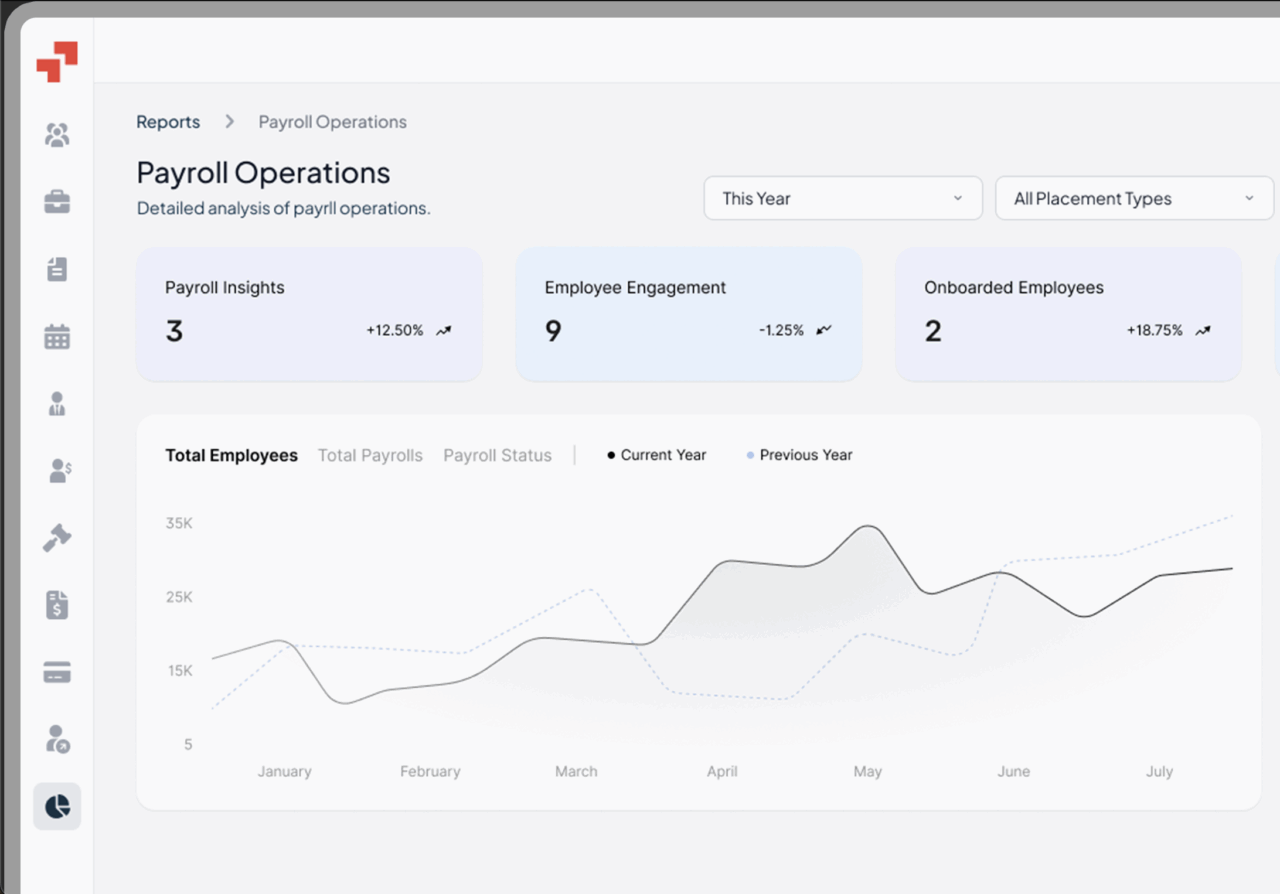Global Workforce GlossaryWhat is a W-2 Employee?
A W-2 employee is a worker classified as a statutory employee under IRS regulations, where the employer controls how, when, and where work is performed.
The employer sets work schedules, job duties, and reimbursement policies for W-2 employees. The company withholds federal, state, and FICA taxes from its wages and is responsible for withholding payroll taxes, including federal and state income taxes, from employee wages.
Table of Contents
- What is a W-2 Employee?
- What is a Form W-2?
- What is the difference between a W-2 and a 1099 employee?
- How to determine if a worker is a 1099 worker or a W-2 employee?
- W-2 Employee Benefits
- What is needed to hire a W2 employee?
- W-2 Employee Requirements
- Consequences of Misclassifying a W-2 employee
- What is an example of a W-2 employee?
- When should you hire a W-2 employee?
- Are W-2 employees full-time?
- Who is responsible for W-2 tax deductions?
What is a Form W-2?
Form W-2, officially called the “Wage and Tax Statement,” is a tax form required by the Internal Revenue Service (IRS) that employers must provide to W-2 employees and the Social Security Administration by January 31st annually.
It reports total wages paid, federal and state taxes withheld, Social Security and Medicare contributions, and other compensation details from the previous tax year. The form also details social security contributions and medicare taxes withheld from employee wages. The form contains multiple copies for employee tax filing, state reporting, and employer records.
Employees use these tax forms to file tax returns with the IRS for tax purposes. Form W-2 serves as official proof of income and tax withholdings, enabling employees to complete their annual tax returns accurately while providing the IRS with employment verification data. This tax form is essential for tax return preparation and compliance with IRS requirements.
What is the difference between a W-2 and a 1099 employee?
| Aspect | W-2 Employee | 1099 Contractor |
|---|---|---|
| Tax Withholding | Employer withholds federal, state, and payroll taxes from each paycheck. | Responsible for paying own federal, state, and self-employment taxes quarterly. |
| Benefits | Eligible for company-sponsored benefits such as health insurance, 401(k), and PTO. | No company benefits provided. |
| Work Control | Employer controls when, where, and how the work is performed. | Has greater independence and decides how, when, and where to complete the work. |
| Equipment | The company provides the necessary tools, equipment, and software. | Uses personal tools, equipment, and resources to complete the job. |
| Training | Receives company training and onboarding to meet role requirements. | Works independently, expected to bring existing skills and expertise. |
| Work Schedule | Follows set hours and a fixed schedule determined by the employer. | Maintains a flexible schedule and sets their own working hours. |
| Cost to Employer | Higher overall cost due to payroll taxes, benefits, and administrative overhead. | Lower cost – employer pays only the agreed-upon rate without additional tax or benefit expenses. |
How to determine if a worker is a 1099 worker or a W-2 employee?
The IRS uses three primary tests to determine worker classification, behavioural control, financial control, and relationship type.
Behavioral control examines whether the company directs how work is performed through instructions, training, and supervision.
Financial control evaluates who bears business expenses, provides equipment, and determines payment methods. The nature of the worker’s job, including the importance and control of their tasks, is also a key factor in determining whether a worker is classified as an employee or independent contractor.
The relationship test considers benefits, written contracts, and permanency expectations. Work hours are not the sole determinant of tax status, but are considered part of the overall business controls exercised by the employer. If the company controls the worker’s daily activities, provides equipment and training, and establishes an ongoing employment relationship with benefits, the worker is likely a W-2 employee requiring full tax withholding and compliance obligations.
W-2 Employee Benefits
W-2 employees receive comprehensive benefit packages including health insurance, dental and vision coverage, retirement plans (401k with employer matching), paid time off, sick leave, and workers’ compensation protection, which also covers rehabilitation costs for employees recovering from work-related injuries or illnesses.
Additional benefits often include life insurance, disability coverage, professional development opportunities, tuition reimbursement, flexible spending accounts, and stock options. These benefits provide financial security, career advancement opportunities, and legal protections under federal employment laws.
W-2 employees are also eligible for unemployment benefits, which provide income support if they lose their job involuntarily. Employers are required to provide income support through unemployment insurance programs, ensuring employees receive temporary financial assistance during periods of unemployment.
For employers, offering competitive benefits packages helps attract top talent, reduce turnover, improve productivity, and maintain compliance with federal regulations like the Affordable Care Act and ERISA requirements.
What is needed to hire a W2 employee?
Hiring W-2 employees requires obtaining an Employer Identification Number (EIN), registering with state unemployment and workers’ compensation agencies, and establishing payroll systems for tax withholding.
Employers must complete Form I-9 for employment eligibility verification, obtain signed Form W-4 for tax withholding preferences, and maintain detailed payroll records. Additional requirements include workers’ compensation insurance, unemployment insurance registration, and compliance with state-specific employment laws.
W-2 Employee Requirements
W-2 employee requirements include federal tax withholding (income tax, Social Security, Medicare), payroll taxes, state tax compliance where applicable, and adherence to Fair Labor Standards Act provisions for minimum wage and overtime.
Employers must maintain accurate timekeeping records, provide workers’ compensation coverage (often referred to as workers’ comp), and comply with OSHA workplace safety standards.
Additional requirements include unemployment insurance contributions, with employers required to pay federal unemployment taxes (FUTA) to fund these programs, new hire reporting to state agencies, and equal opportunity employment compliance.
Consequences of Misclassifying a W-2 employee
Misclassifying W-2 employees as contractors triggers severe financial penalties, including back taxes, interest, and fines from the IRS and Department of Labour.
According to the IRS, penalties can reach $50 per Form W-2 plus 1.5% of wages for federal tax withholding failures. Misclassification can also result in incorrect or missing tax forms, such as W-2s or other required documents, which may lead to further penalties and compliance issues.
Additional consequences include state tax penalties, workers’ compensation violations, unemployment insurance assessments, and potential lawsuits for denied benefits.
What is an example of a W-2 employee?
A marketing manager at a software company exemplifies a typical W-2 employee. She works scheduled hours (9 AM-5 PM), receives monthly salary payments with automatic tax withholdings, and, depending on the company’s pay structure, W-2 employees like her could also be paid an hourly wage instead of a salary.
She uses company-provided equipment, including a laptop and software licenses, and participates in team meetings and training programs. The company covers her health insurance premiums, contributes to her 401(k) retirement plan, and provides paid vacation time.
She reports directly to the marketing director, follows company policies and procedures, and her work integrates seamlessly with other departments to achieve business objectives. This arrangement demonstrates the control, benefits, and ongoing relationship characteristics defining W-2 employment classification.
When should you hire a W-2 employee?
Hire W-2 employees when you need ongoing, integrated work that requires direct supervision and company-specific training. This classification works best for core business functions, customer-facing roles, and positions requiring access to proprietary information or systems.
W-2 employment is ideal when you want to build company culture, ensure consistent quality standards, and maintain competitive advantage through employee loyalty and retention. Consider W-2 hiring for roles exceeding 30 hours weekly.
Are W-2 employees full-time?
W-2 employees can work full-time, part-time, or temporary schedules – the classification depends on the employment relationship structure, not hours worked. The IRS focuses on control and relationship factors rather than time commitment for classification purposes.
However, the Affordable Care Act defines full-time employees as those working 30+ hours weekly or 130+ hours monthly, triggering health insurance requirements for applicable large employers. Part-time W-2 employees still receive tax withholding and workers’ compensation protection, but may have limited benefit eligibility based on company policies.
Who is responsible for W-2 tax deductions?
Employers are exclusively responsible for calculating, withholding, and remitting W-2 employee tax deductions to the appropriate federal and state agencies.
This includes federal income tax, Social Security tax (6.2%), Medicare tax (1.45%), state income tax where applicable, and state disability insurance in relevant states. Employers must deposit withheld taxes according to IRS schedules (monthly or semi-weekly, based on deposit amounts) and file quarterly Form 941 returns.
Additionally, employers pay matching Social Security and Medicare contributions, federal and state unemployment taxes.
Practical Implementation: Scaling Your W-2 Workforce
Consider TechStart Inc., a Series B software company expanding from 50 to 150 employees. Their CHRO implemented a structured W-2 hiring strategy: first, they partnered with a professional employer organisation (PEO) to handle payroll complexity and benefits administration, reducing administrative burden by 60%.
Second, they established clear job descriptions and classification criteria to prevent misclassification risks. Third, they implemented automated onboarding systems for I-9 verification, W-4 collection, and new hire reporting.
The result? TechStart reduced hiring time from 6 weeks to 3 weeks while maintaining 100% compliance.
Their W-2 workforce retention increased 40% due to competitive benefits packages, and they avoided potential misclassification penalties estimated at $2.3 million. This systematic approach demonstrates how strategic W-2 employee management drives sustainable growth while minimising compliance risks.
Hire the Best Talent, Anywhere






